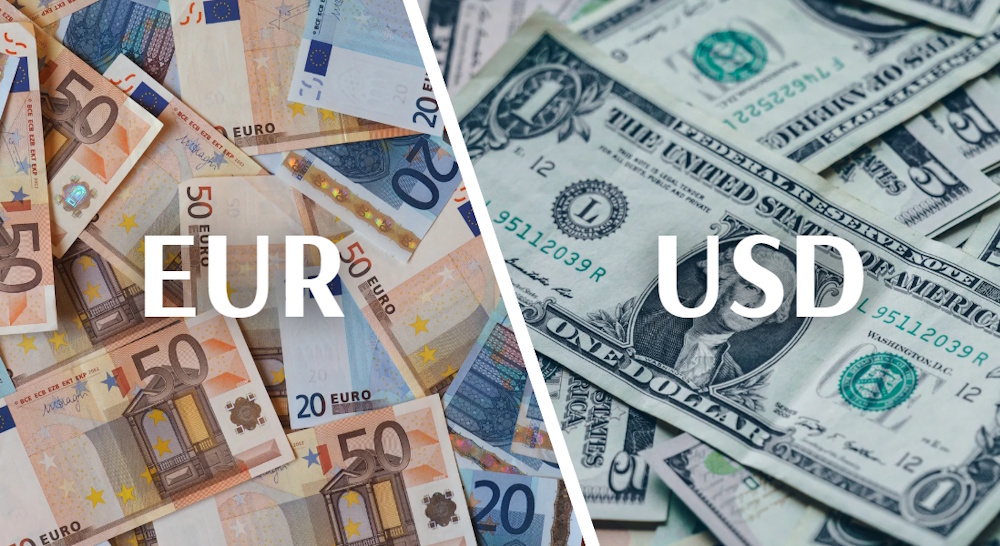EUR/USD approaches 1.1550, reaching its lowest point in more than two months. Ongoing U.S.–China tariff tensions, a strong U.S. dollar, and investor apprehension in anticipation of Federal Reserve Chair Jerome Powell’s speech are significantly impacting market sentiment. Market participants adopted a defensive stance following President Trump’s announcement of a 100% tariff threat on Chinese imports, scheduled to be implemented in November. In response, Beijing introduced new export restrictions and port fees. The outcome has led to an increase in safe-haven demand for the dollar, with the U.S. Dollar Index stabilizing around 99.25, demonstrating resilience despite a slight decline in Treasury yields. The euro, in contrast, encountered constrained backing from European fundamentals, as Germany’s ZEW Economic Sentiment Index fell short of expectations, amplifying worries regarding decelerating regional growth.
Market participants are closely monitoring the Federal Reserve’s forthcoming policy decisions and their potential impact on global foreign exchange dynamics. Market participants have incorporated a 25-basis-point rate reduction in October and an additional cut in December, resulting in a projected federal funds rate of 3.75%–4.00%, as indicated by reports. Nonetheless, in light of these expected reductions, the dollar remains a magnet for capital inflows, driven by an ongoing U.S. fiscal impasse, heightened risk aversion, and a more robust economic performance relative to the eurozone. In contrast, ECB policymakers are limited by weak inflation and sluggish output, which restricts the central bank’s ability to act. The euro’s struggle to gain momentum underscores investor doubts regarding Europe’s recovery story, especially as Germany faces challenges in steering clear of recessionary indicators.
EUR/USD remains within a descending channel, indicating a medium-term bearish trend. The pair faces resistance at the 50-day EMA positioned at 1.1636 and the 200-day EMA located around 1.1686, with prevailing downside pressure evident beneath both averages. The immediate support level is positioned around 1.1540, with a more substantial support zone located near 1.1470. A breach of this latter level could potentially lead to a decline toward 1.1380. Momentum indicators continue to show weakness, as the RSI is positioned around 41, indicating a lack of robust buying interest. Bulls encounter a significant obstacle at 1.1630, marking the upper limit of the channel. A confirmed close above that region would suggest a short-term reversal; however, the prevailing market sentiment continues to favor sellers. The current U.S. government shutdown, which has now reached its third week, introduces additional complexities to the macroeconomic environment. The ongoing standoff poses risks to short-term growth, yet it simultaneously strengthens the dollar’s status as a safe-haven asset. Focus is now directed towards the forthcoming U.S. CPI release on October 15, anticipated to indicate a 0.4% increase month-on-month and an annual inflation rate approaching 3.1%, a rise from 1.9%. A weaker print may rekindle dovish expectations regarding the Fed, whereas a stronger reading would probably drive another surge in dollar strength. In Europe, inflation is significantly under the target, and the economic indicators from France, Germany, and Italy persist in underperforming. Weak industrial output and sluggish consumer sentiment further highlight the disparity between eurozone and U.S. economic performance, reinforcing the dollar’s dominance in the near term.
Market participants are cautious as they await Powell’s remarks, which are anticipated to elucidate the Fed’s stance on potentially expediting rate cuts or maintaining the current course in light of increasing political pressure. Any indication of further easing could temporarily boost EUR/USD, although the prevailing trend continues to be bearish. The ongoing U.S.–China tariff conflict continues to influence overall market sentiment. Trump’s softened rhetoric—“Don’t worry about China, it will all be fine”—offered a momentary reprieve; however, underlying structural risks remain as negotiations continue to falter. The Euro did not manage to leverage the earlier safe-haven inflows that occurred after tariff escalations, highlighting the pair’s uneven responsiveness to global risk cycles. The euro has experienced brief recoveries that have consistently faced selling pressure around resistance levels.

